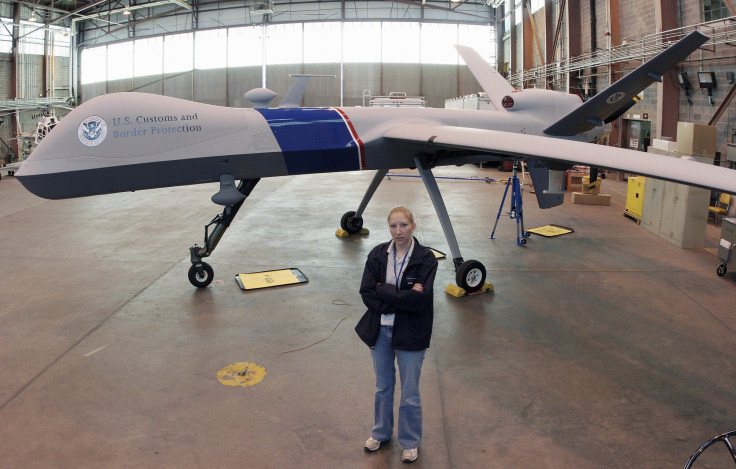Immigration Reform: Drones At The U.S. Border Are Expensive, Not Proven Effective, Report Says

About half of the 1,954-mile border between the U.S. and Mexico is patrolled by drones thanks to a federal program launched nearly 10 years ago. But a new watchdog report says there’s no evidence that the drones are effectively policing the border, and that taxpayers footing the bill to the tune of more than $12,000 per hour of flight aren't getting their money's worth.
The Department of Homeland Security’s Office of the Inspector General issued a biting review of the border drone program, operated by the Customs and Border Protection agency (CBP). After eight years, the report states, “CBP has invested significant funds in a program that has not achieved the expected results, and it cannot demonstrate how much the program has improved border security.”
The use of military-grade Predator B drones for border surveillance has ballooned since CBP’s program launched in 2005, with proponents saying they had more endurance and better capacity than other manned flying vehicles like helicopters. There are nine drones currently in operation (CBP has purchased 11 in total, but one crashed in 2006 and another crashed in January 2014) and they primarily patrol two areas of the border: the Arizona-Tucson sector and the Rio Grande Valley sector.
The audit, which surveyed border drone operations through fiscal year 2013, found that “relatively few” apprehensions of border crossers were attributed to drone operations. Drones led to about 1.8 percent of apprehensions in the Tucson sector and a mere 0.7 percent in the Rio Grande Valley, according to CBP’s data. The agency had aimed to fly the drones for 16 hours a day to patrol, but the report found they were airborne only for 22 percent of that time.
Moreover, the report said, the program is far more expensive than CBP’s cost estimates suggest. CBP estimates that each flight hour costs around $2,468, but the inspector general’s office said that figure was closer to $12,255, factoring in additional operating costs of pilots, equipment, support staff and other overhead. (By comparison, the similar MQ-9 Reaper drone used by the Air Force costs an estimated $3,624 per flight hour, while the manned F-16C fighter-bomber costs more than $20,000 per flight hour, according to Time magazine's calculations.) “The $443 million CBP plans to spend on program expansion could be put to better use by investing in alternatives,” the report said, referring to the agency’s 2012 proposal to buy an additional 14 aircraft to survey the border.
The inspector general’s office noted that CBP agreed with one of its recommendations to work with another Homeland Security office to evaluate the necessity and cost-effectiveness of purchasing any additional drones. But CBP said it wouldn’t revise its cost calculation methodology to more accurately reflect the total cost of operating drones on the border, saying its current methods met all federal requirements.
This isn’t the first internal report to challenge the cost-effectiveness of the border drone program. The inspector general’s office issued another review in 2012 that pointed out inadequacies in the agency’s resource planning for the unmanned aircraft mission. The Government Accountability Office (GAO) also noted in a report last year that around 20 percent of drone flights from 2011 to April 2014 were conducted in the interior of the U.S., away from the border and coastal areas. However, the GAO’s findings countered criticisms that the border drone program would raise privacy issues, saying that the Department of Homeland Security was complying with privacy and civil liberty laws in its use of unmanned vehicles.
Tom Barry, director of the TransBorder Project at the Center for International Policy and longtime critic of the border drone program, said he wasn’t surprised at the findings. “Having one more report -- that would be great if it changed anything,” he said.
The new session of Congress is set to debate appropriations for the Department of Homeland Security, whose funding runs out at the end of February. But Barry said the political forces underpinning the department’s use of drones make it unlikely the program will be in any jeopardy.
“Both Democrats and Republicans are behind high-tech solutions to the border for many reasons – out of a knee-jerk belief in high-tech solutions and because there’s a lot of money and lobbying involved, and they want to look tough on border security and support drones despite all the evidence that they are ineffective,” he said. Barry authored a report in 2013 detailing the expansion of border drones over the past decade and questions over congressional oversight of the program.
“This is not new,” he added. “This is just a long series of critiques from within the institutions. At this point, it’s almost like, why waste money on the reports?”
© Copyright IBTimes 2024. All rights reserved.






















